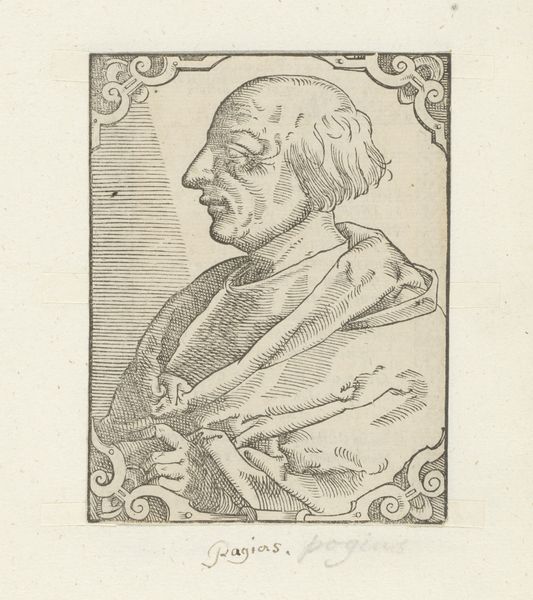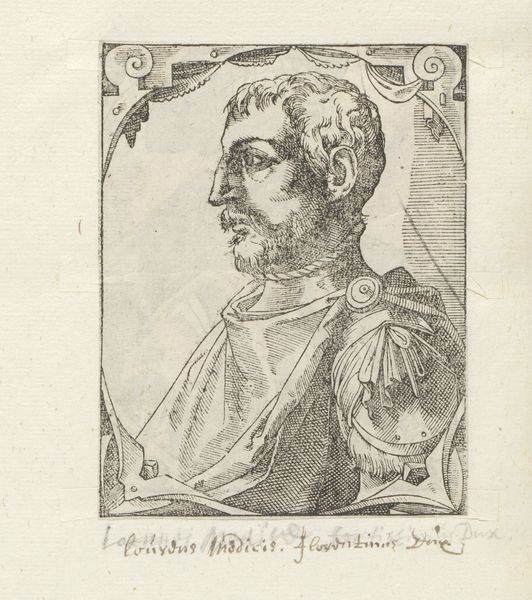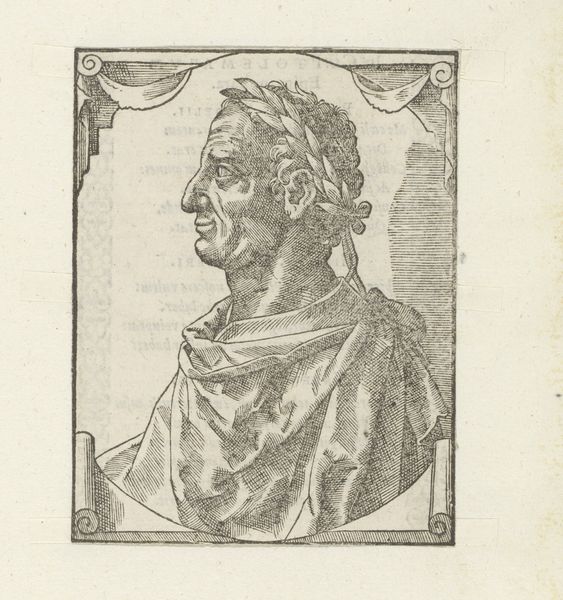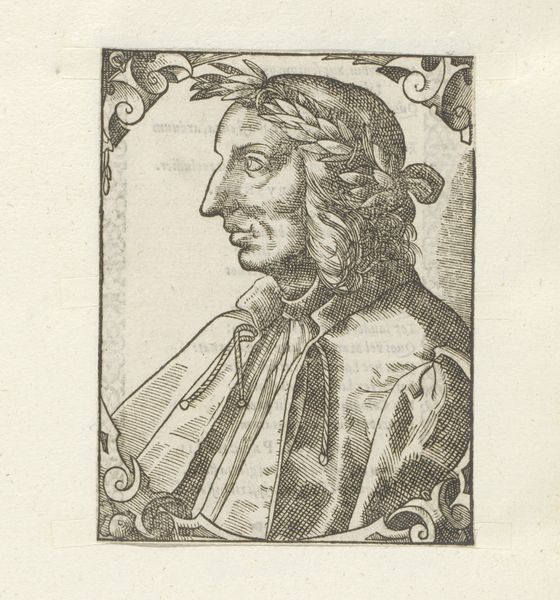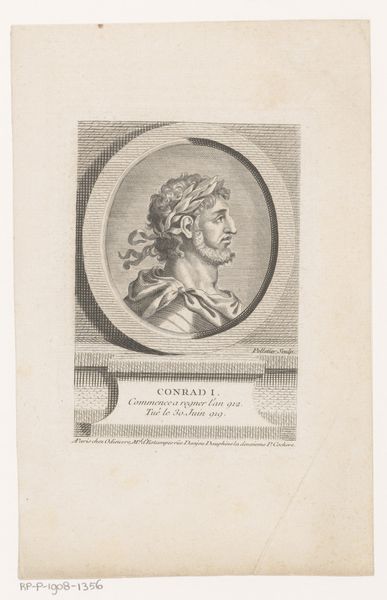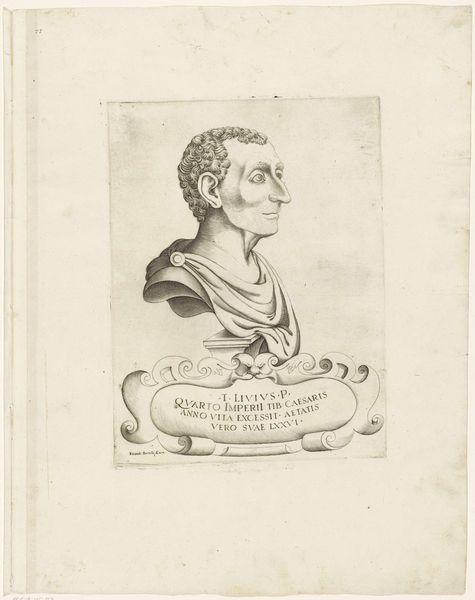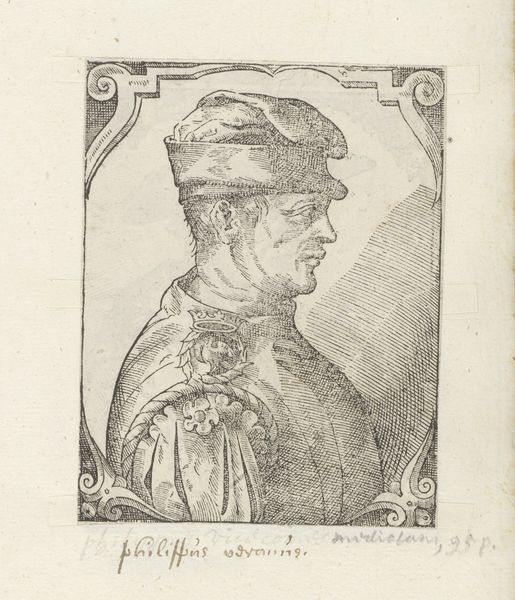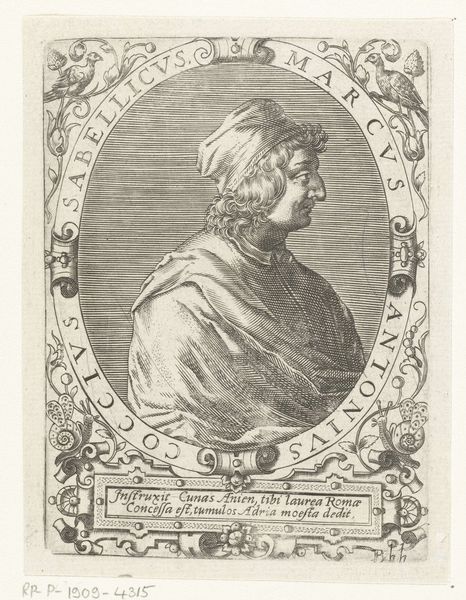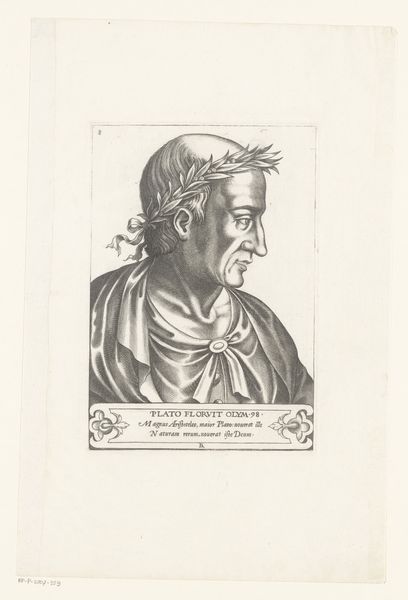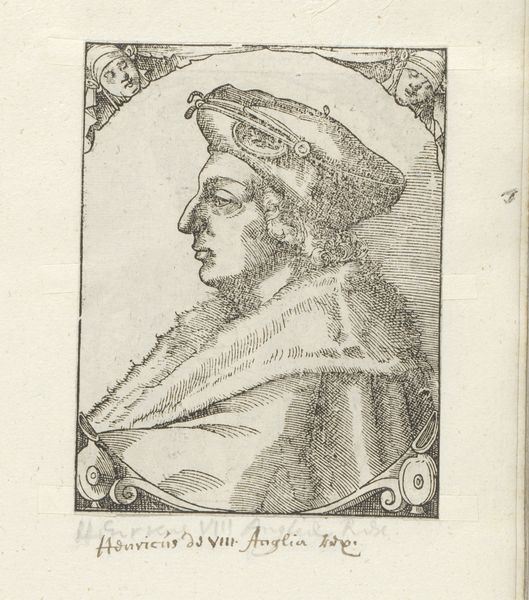
print, engraving
#
portrait
# print
#
old engraving style
#
classical-realism
#
figuration
#
11_renaissance
#
line
#
history-painting
#
italian-renaissance
#
engraving
Dimensions: height 108 mm, width 81 mm
Copyright: Rijks Museum: Open Domain
This portrait of Flavio Biondo was made with engraving, a printmaking technique that involves incising an image onto a metal plate, which is then inked and pressed onto paper. The engraver would have used a tool called a burin to carve lines into the metal, a process demanding precision and skill. The density and direction of these lines create the illusion of shading and volume, bringing Biondo's likeness to life. It's a labor-intensive process, and the resulting print could be reproduced multiple times, making images more widely accessible. Engraving emerged in the 15th century, coinciding with the rise of the printing press and the spread of knowledge and ideas. It offered a way to disseminate portraits of notable figures like Biondo, contributing to the construction of historical narratives and the circulation of humanist ideals. Considering the materials and processes, this portrait encapsulates the intersection of craft, technology, and cultural values in the early modern period.
Comments
No comments
Be the first to comment and join the conversation on the ultimate creative platform.
